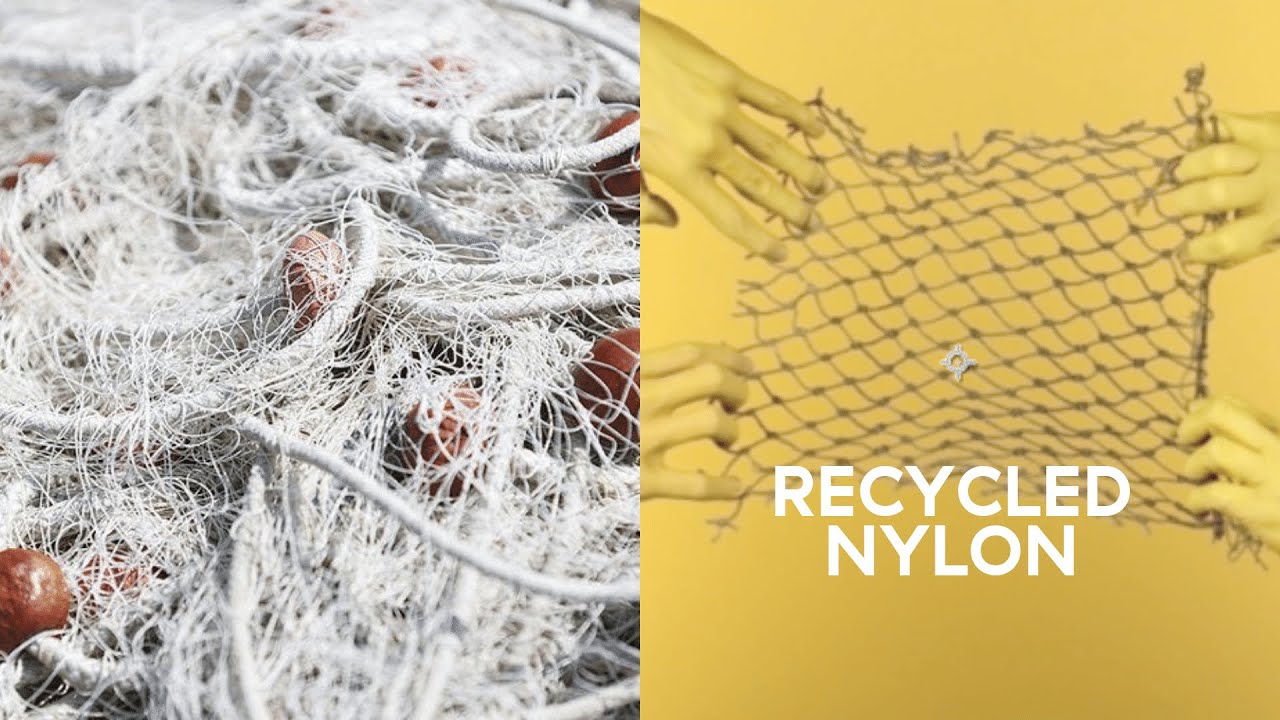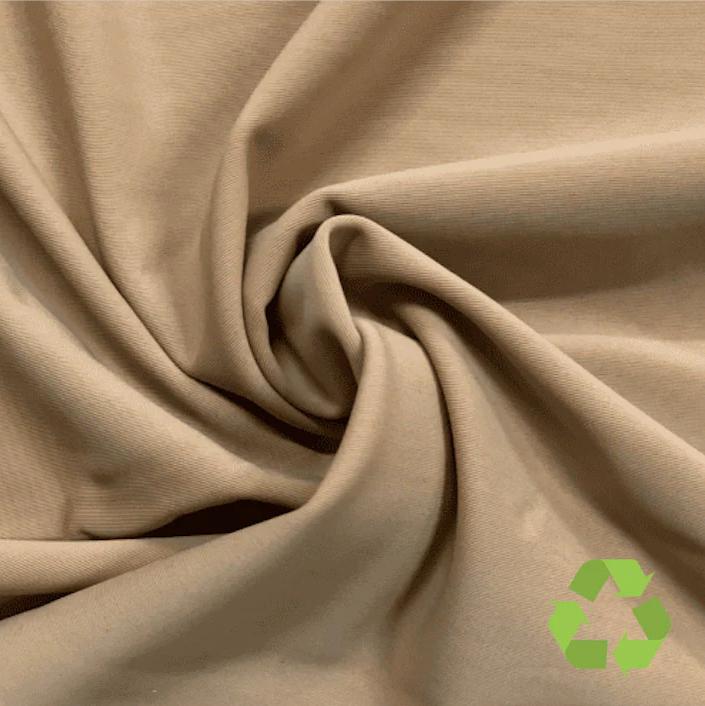What’s nylon? What’s recycled nylon?
Nylon is a generic designation for a family of synthetic polymers composed of polyamides (repeating units linked by amide links). Nylon is a silk-like thermoplastic generally made from petroleum that can be melt-processed into fibers, films, or shapes. Nylon polymers can be mixed with a wide variety of additives to achieve many different property variations. Nylon polymers have found significant commercial applications in fabric and fibers (apparel, flooring and rubber reinforcement), in shapes (molded parts for cars, electrical equipment, etc.), and in films (mostly for food packaging. Nylon is a polymer, composed of repetitive units of diamines and dicarboxylic acids that contain different numbers of carbon atoms. Most contemporary nylon is made from petrochemical monomers (the chemical building blocks making up polymers), combined to form a long chain through a condensation polymerisation reaction. The resulting mixture can be cooled and the filaments stretched into an elastic thread. Recycled Nylon is an alternative to Nylon made from waste products. Typically, Nylon has a significantly detrimental environmental impact. Still, this material's creators seek to help reduce this fabric's effects on the environment by using recycled base materials.

Why is recycled Nylon a sustainable material?
1.Recycled nylon is an eco-friendly alternative to the original fiber because it skips the polluting manufacturing process.
2. Recycled Nylon has the same benefits as recycled polyester: It diverts waste from landfills and its production uses much fewer resources than virgin nylon (including water, energy and fossil fuel).
3. A large part of the recycled nylon produced comes from old fishing nets. This is a great solution to divert garbage from the ocean. It also comes from nylon carpets, tights, etc.
4.Unlike traditional nylon made from virgin fossil fuels, recycled nylon is made from nylon that already exists in waste products. This greatly reduces the environmental impact of the fabric (at the material sourcing stage, anyway).
5. Econyl has a reduced global warming potential of up to 90% less as compared to standard nylon. Noting that figure has not been independently verified.
6. Discarded fishing nets can harm aquatic life and build up over time, recycled nylon puts this material to better use.

Why we choose recycled nylon material?
1.For nylon, during the manufacturing process, many of the required chemicals end up in the water— which ultimately escapes into waterways near the manufacturing locations. That’s not even the worst of nylon’s impact on the planet. Diamine acid has to be combined with adipic acid to make nylon. During the production of adipic acid, significant amounts of nitrous oxide are released into the atmosphere. This greenhouse gas really packs a punch as it’s considered 300 times more harmful for our environment than carbon dioxide. Unlike natural fibers that biodegrade over years or decades, nylon takes much longer—like, hundreds of years longer. That’s if it even ends up in a landfill. Often it’s just dumped into the ocean (as discarded fishing nets) or eventually finds its way there.
2.Unlike traditional nylon made from virgin fossil fuels, recycled nylon is made from nylon that already exists in waste products. This greatly reduces the environmental impact of the fabric (at the material sourcing stage, anyway).
3.The cost of recycled nylon is similar to that of nylon, and will likely decrease as it becomes more popular.
4. Recycled nylon has received certification from OEKO-TEX Standard 100,ensuring a certain level of toxicity isn’t present in the final garment.
5. The bags made from recycled nylon look very beautiful, luxury and with high quality. Customers like this material.

